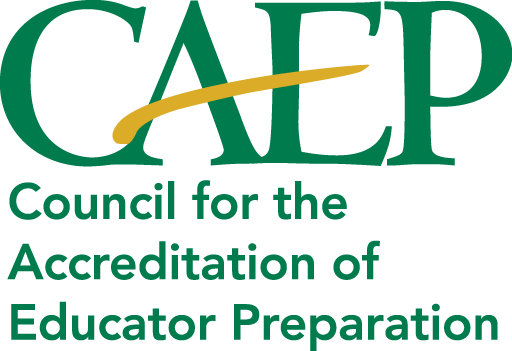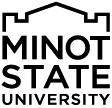Accreditation and Assessment
The accrediting body of the Teacher Education Unit at Minot State University, CAEP (the Council for the Accreditation of Educator Preparation), requires Education Preparation Providers to disseminate information annually to the public, prospective teacher candidates, policymakers, the media, and CAEP. This information falls into two broad categories: 1. Program Impact (the performance of completers once employed), 2. Program Outcome and Consumer Information (yardsticks that states and policymakers will find useful).
Minot State University offers two pathways to initial teacher licensure (a stand-alone license which permits a teacher candidate to gain employment in a P-12 school) with the state of North Dakota. First, we offer B.S.Ed. undergraduate degrees in a variety of programs (mathematics, English, special education, and early childhood education, to name a few). We also offer an M.S. in Special Education, which can lead to initial licensure. The categories below are labeled either "Undergraduate" or "Graduate" to indicate which degree level the presented data represents.
CAEP Accountability Measures, 2022 - Present
Impact that candidates' teaching has on P-12 learning and development - Initial
Results of Employer Surveys - (Supervisor Survey-Statewide Tool)
- Data Document Supervisor Survey Contexts and Graphs 2023-2024
- Data Document Supervisor Survey Context and Graphs. 2020 - 2023
- Exit, Transition to Teaching, and Supervisor Survey Results by Question 2022-2023
- SPED Initial and Advanced Data Tables Employer Survey 2022-2023
Results of Employer Survey - Advanced
Indicators of Teaching Effectiveness - Initial
Indicators of Content Knowledge - Initial
- PRAXIS II Data Tool, 2023-2024
- PRAXIS II Pass Rates TLP and Programs 2022-2023
- MAT Initial Data available in 2024-2025
Indicators of Pedigogical Knowledge - Initial
- PLT Data Tool, 2023-2024
- STOT Data Tool, 2023-2024
- Skills of Teaching Observation Tool INTASC 1 to 10, 2019-2023
Indicators of Application of Professional Dispositions - Initial
- Dispositions Data Tool, 2023 - 2024
- Dispositions Assessment
- MAT Initial Data available in 2024-2025
Indicators of Teaching Effectiveness - Advanced
Indicators of Content Knowledge - Advanced
Indicators of Pedogogical Knowledge - Advanced
- Pedagogical Knowledge - Advanced, 2023-2024
- SPED Initial and Advanced Final Practicum Portfolio Data, 2020-2023
Indicators of Application of Professional Dipsositions Survey Data - Advanced
Retention in Profession Data - Initial
- Retention in Profession Rates for Initial Licensure Completers, 2020-2024 - Initial
- Retention in Profession Rates for Program Completers, 2019 - 2023 - Initial
Retention in Profession Data - Advanced
2019-23
2014-15 Assessment Data
2013-14 Assessment Data
2012-13 Assessment Data
Accreditation:
  |
View the 2010 NCATE Accreditation Reports View the 2006 NCATE Accreditation Reports View the 2004 NCATE Accreditation Reports |




